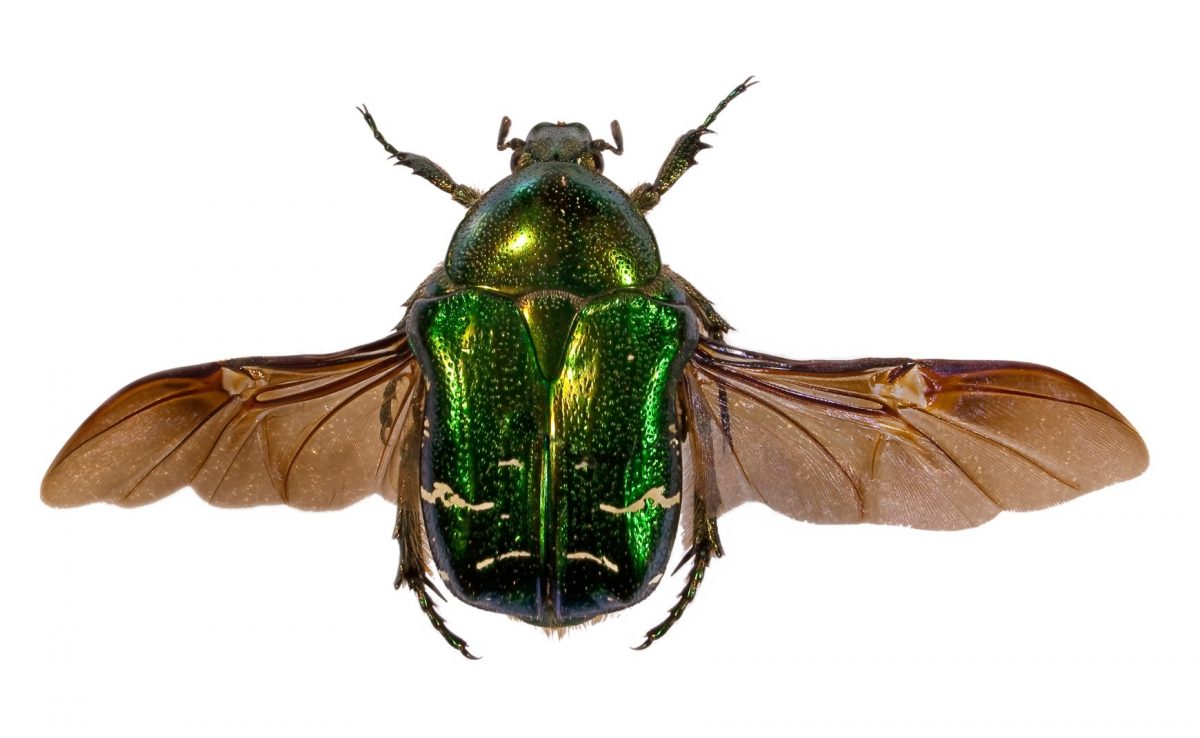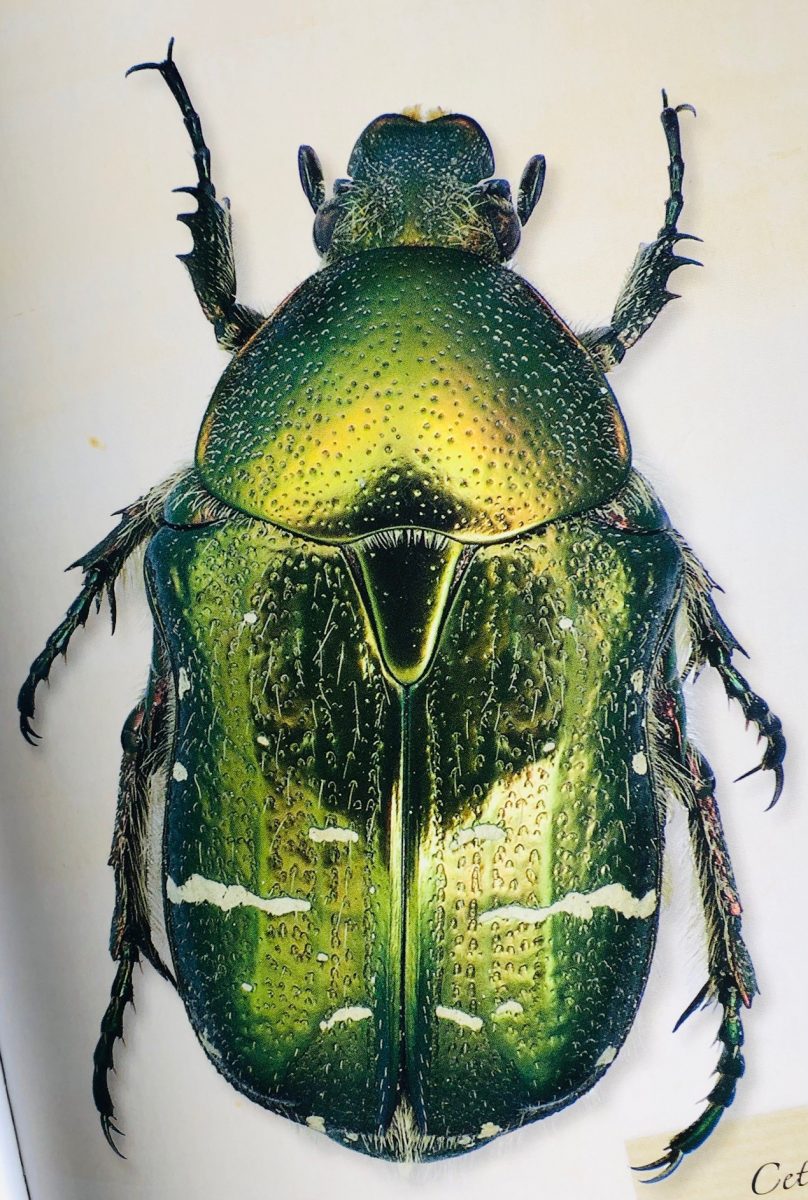(sólo en inglés)
When you will meet the green rose chafer, you will go through a moment of amazement before wondering: “Why is there so much ephemeral beauty in this beetle and where is it coming from?”
The white grubs are the nightmare of the gardeners, because they constantly eat the roots of plants and therefore destroy them.
The chafer grub, “Cetonia aurata” in Latin, looks quite similar to the white grub. Beside it is smaller than the white grub, the chafer grub is unfortunately mistaken for this dreaded animal, which has harmful consequences.

There is a simple, fun and instructive way to identify a chafer grub.
Indeed, unlike the white grub which moves on its 6 legs, the chafer grub weirdly crawls on its back using tiny stiff hairs. You only have to place it in your hand and watch it turning around before moving forward easily.
The green rose chafer is part of the beetle family and lives in our region. It moves around with difficulties in spring, in search of pollen from the flowers of elderberry, hawthorn, wild rose, privet and lime.
![]()
The green rose chafer is an insect, as it has 6 legs. It can be seen in spring, flying around and looking for pollen, its main food. ![]()
Bed and board: this insect is called “rose chafer” because it takes refuge in the heart of the rose when it rains or to rest at night. Of course, it enjoys munching on the rose stamens which are full of pollen. (Watercolour by Emmanuelle Tchoukriel)
This large, metallic, copper-green “buzzing beetle”, that would look fine on a goldsmith’s table, has small, regular spots on its body. Totally harmless, it can be caught by hand.
In the South, the green rose chafer is seen as a lucky animal.
Its name of “rose” chafer suits the beetle well as it likes to visit the rose to eat its pollen stamens, take refuge in it when it rains and fall asleep in its heart at night.
So, keep an eye on the blooming roses in spring, and you will find this insect!
After mating, the female lays about 40 eggs in decaying plants and never lays on ordinary soil.
![]()
Mating of rose chafers on hawthorn flowers in spring. ![]()
Chafer grubs in a hand, found on a stump and in a pile of green waste compost. They are trying to move on their backs.
The hatched worm, curved in a U-shape, sheltered from danger, feeds on it and stays there in the warmth of dead leaves fermentation, grass, sometimes manure or a stump, for up to 2 winters.
When it feels strong enough, it builds itself a rigid, semi-spherical shell, made up of hard particles mixed with its excrement. It locks itself in the shell before undergoing radical changes.
Science classifies the rose chafer among the insects of the “saproxylic community”, a complicated word meaning it has an ecological function as it recycles dead or dying organic matter.
You would be lucky to have a chafer grub in your compost, because, with time, it will turn it into fertile soil, if no chemical or additives are added, which would destroy this precious helper working for the earth.
In spring, the rose chafer finishes its metamorphosis into a shining “perfect insect”. It then breaks its habitat and leaves its protection to fly off into the open air.
It takes-off rapidly thanks to long, finely ribbed wings, which strangely extend through small slits in the sides of its shell and unfold into a canopy.
In the time of the Pharaohs, the beetle, including the sacred beetle, was a symbol of immortality and of the creation of the world.
In the 19th century, it was used in Russia as an anti-rabies remedy, reduced in a powder and spread on a slice of buttered bread.

J.H. FABRE, a naturalist, wrote in his Entomological Memories about the emblematic development of the rose chafer, and more generally about all these decomposing insects able to recycle our green waste in the shade, without us noticing.
Thus, he wrote: “Everything must return to the renovating crucible where death constantly pours in matter for the continual flowering of life.”
With the authorization of l’Est Eclair / Libération Champagne
Text and photos: Yves Meurville




